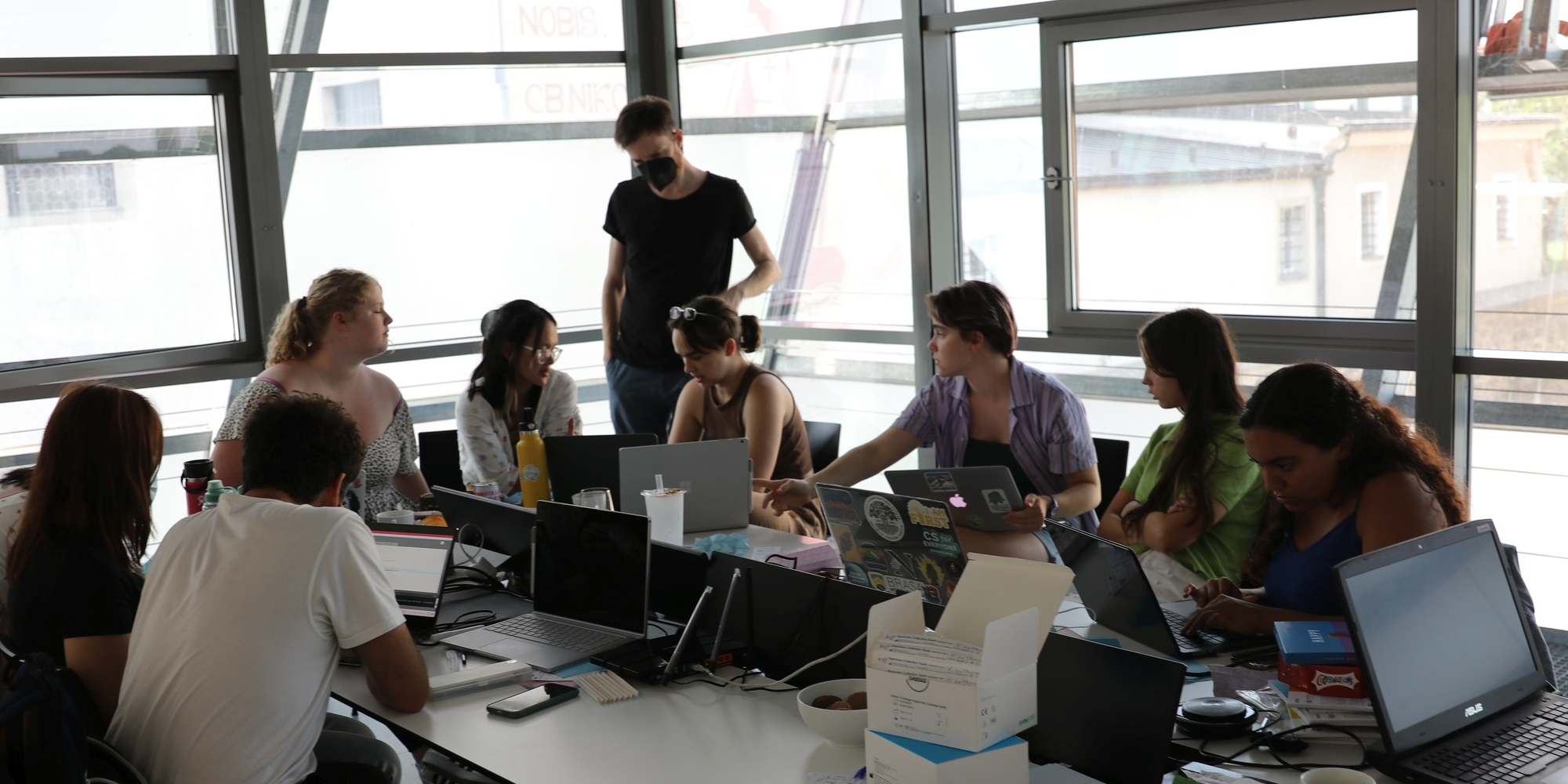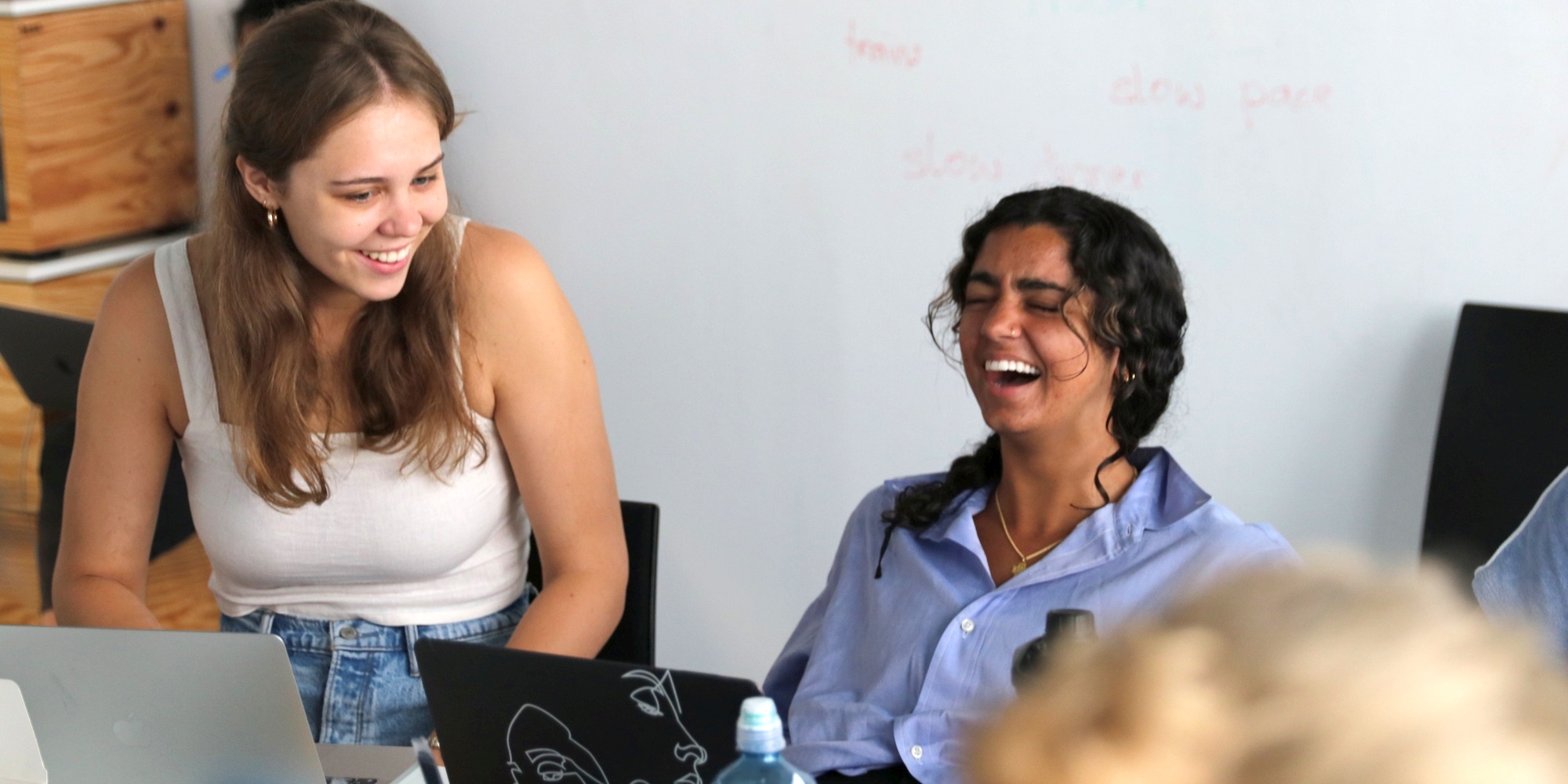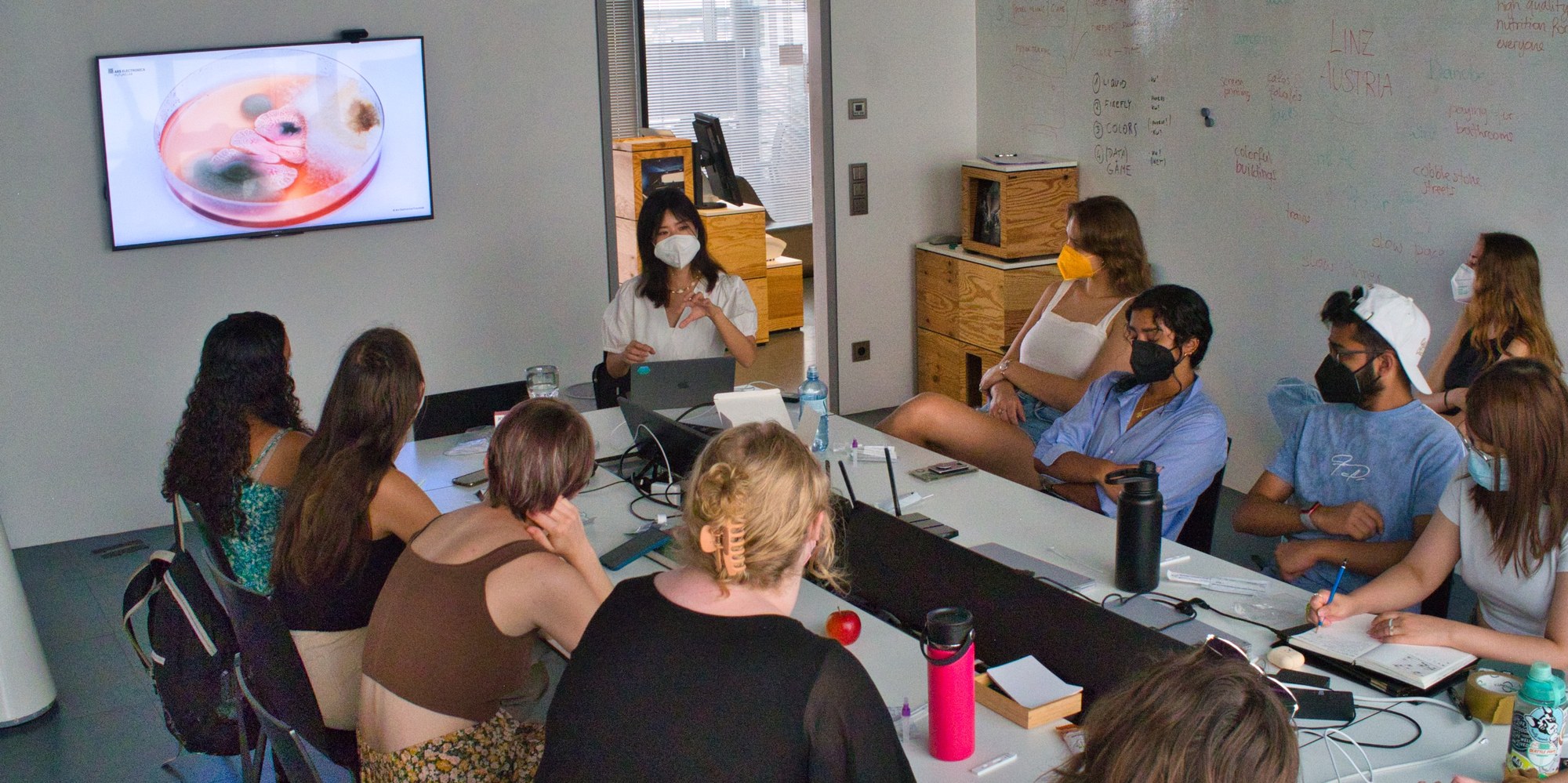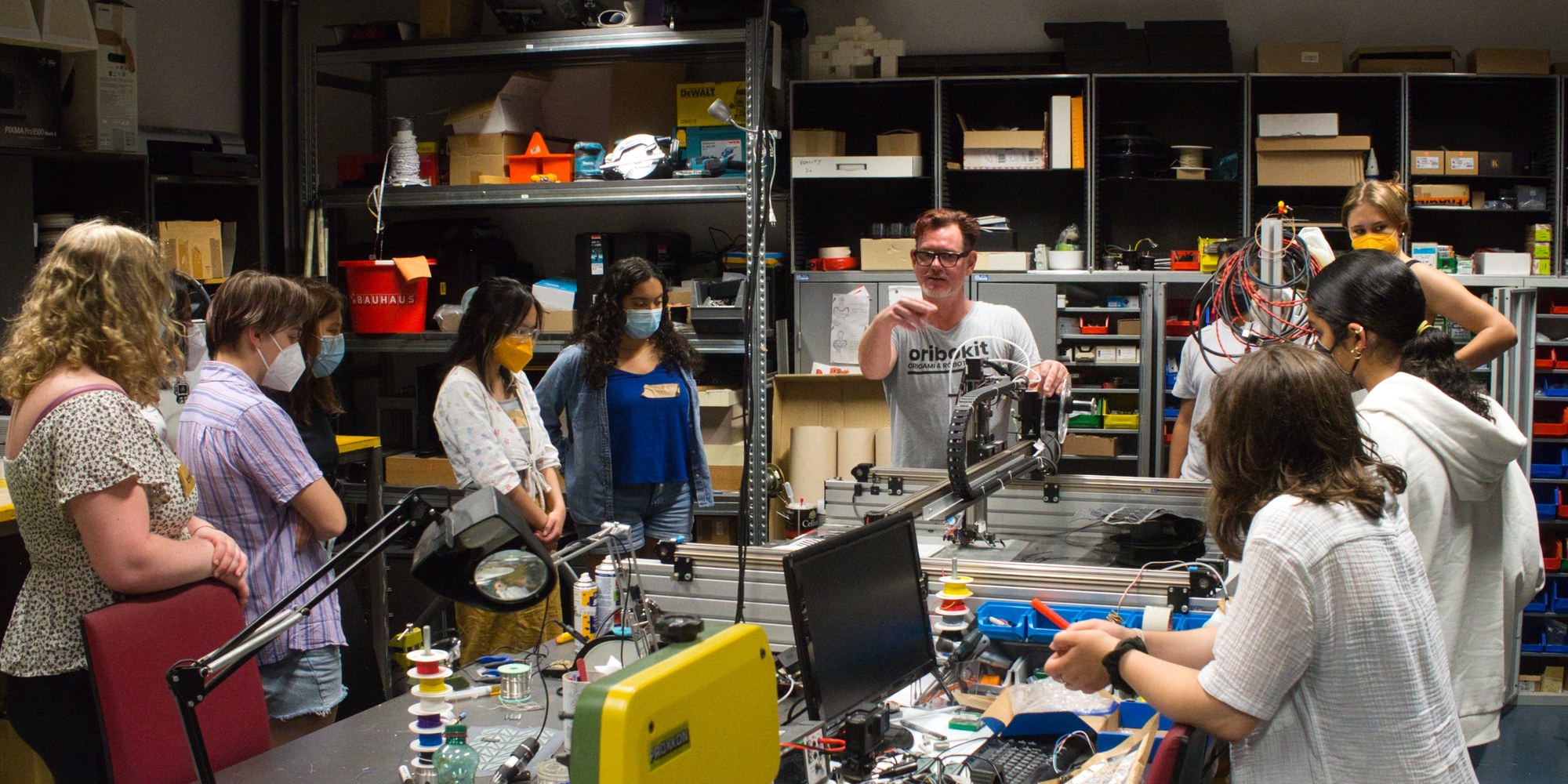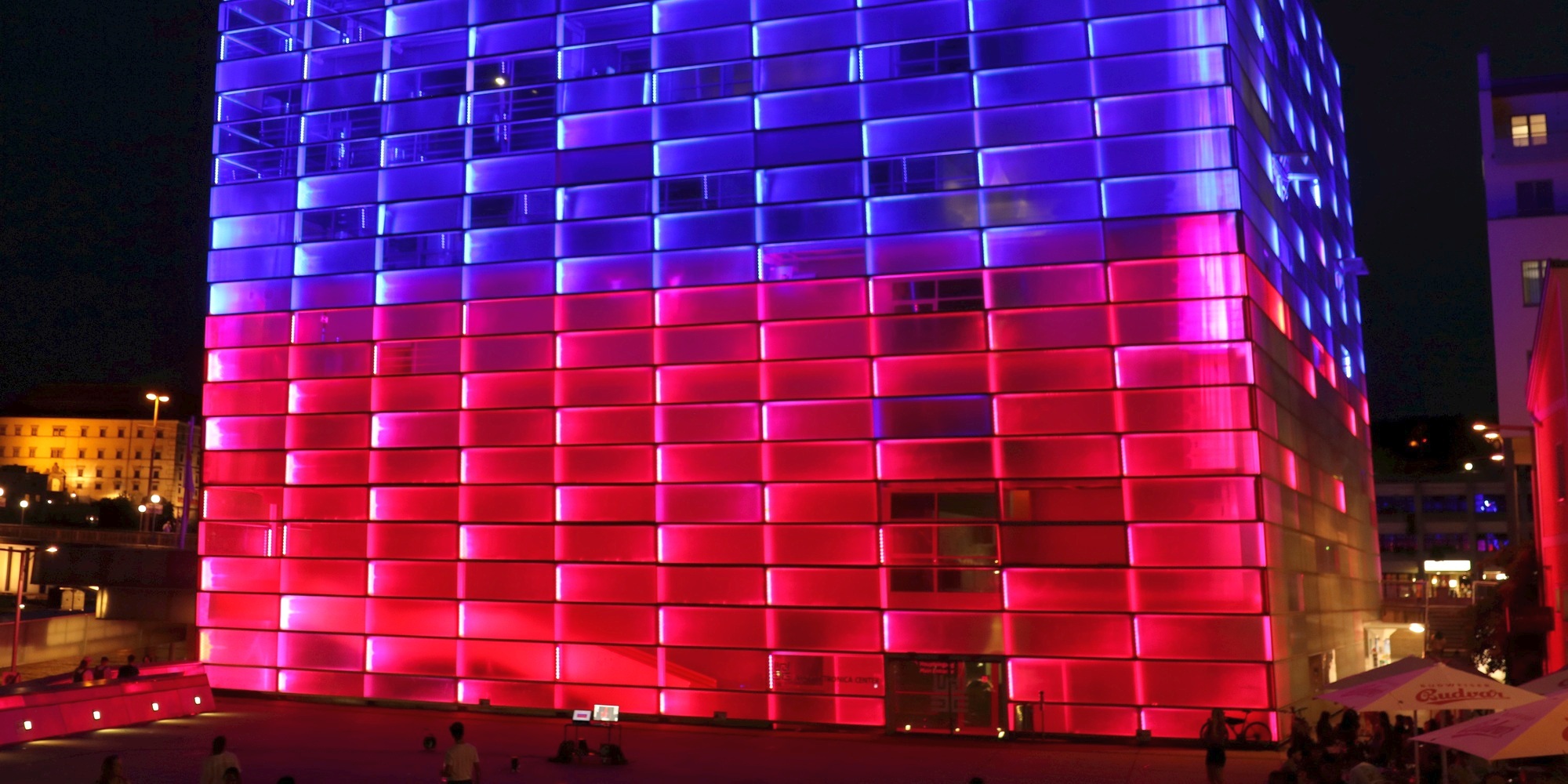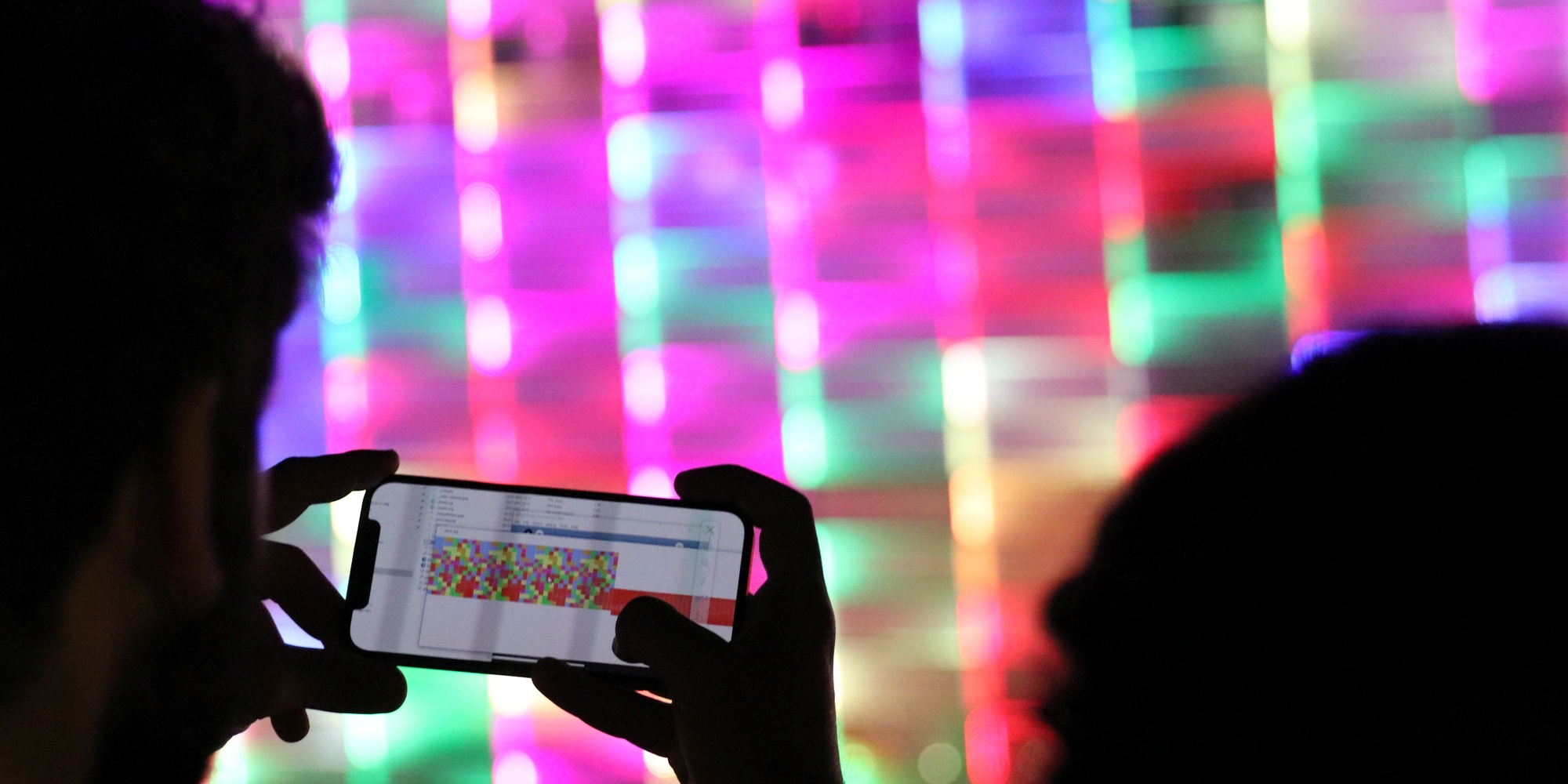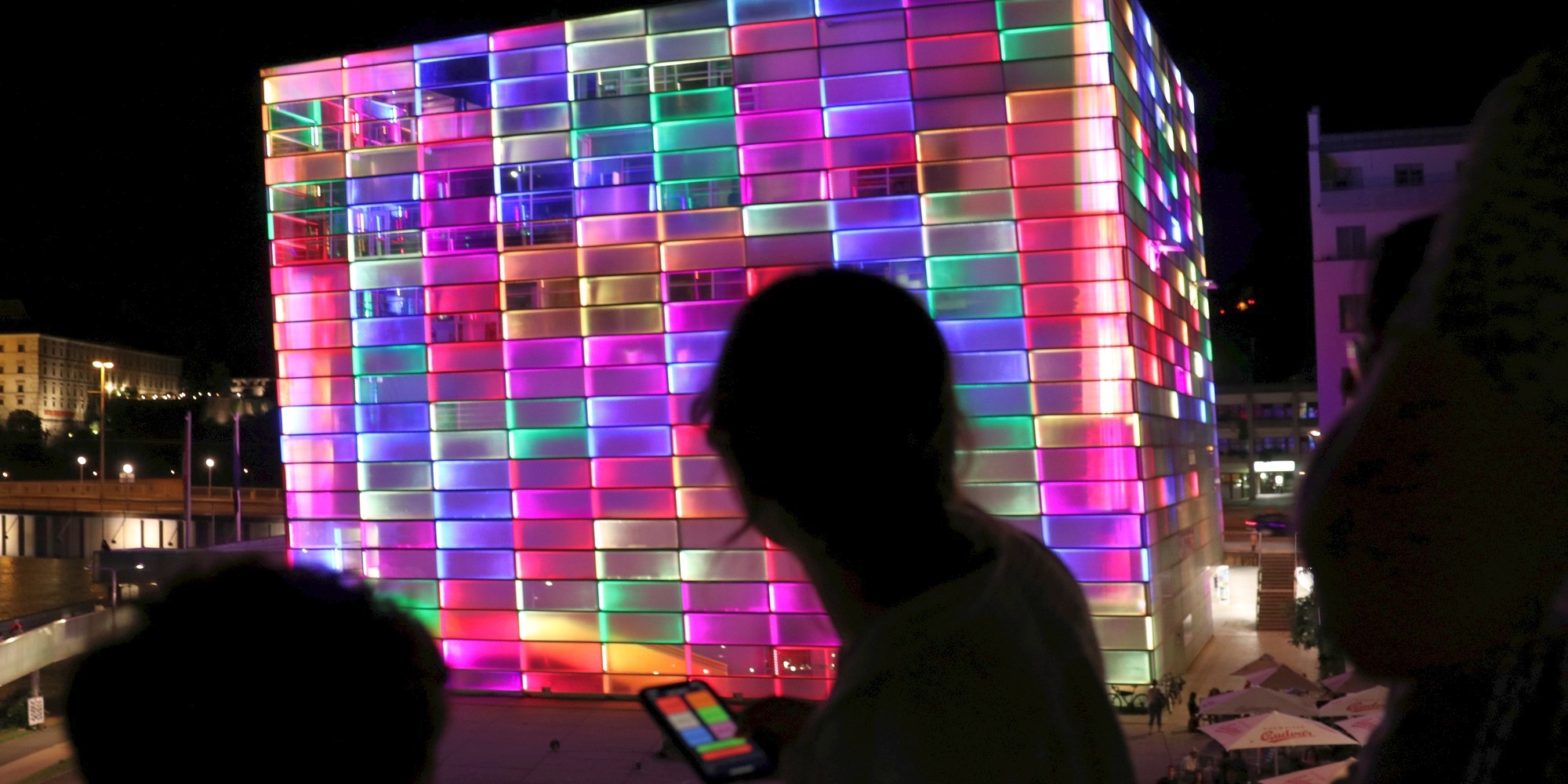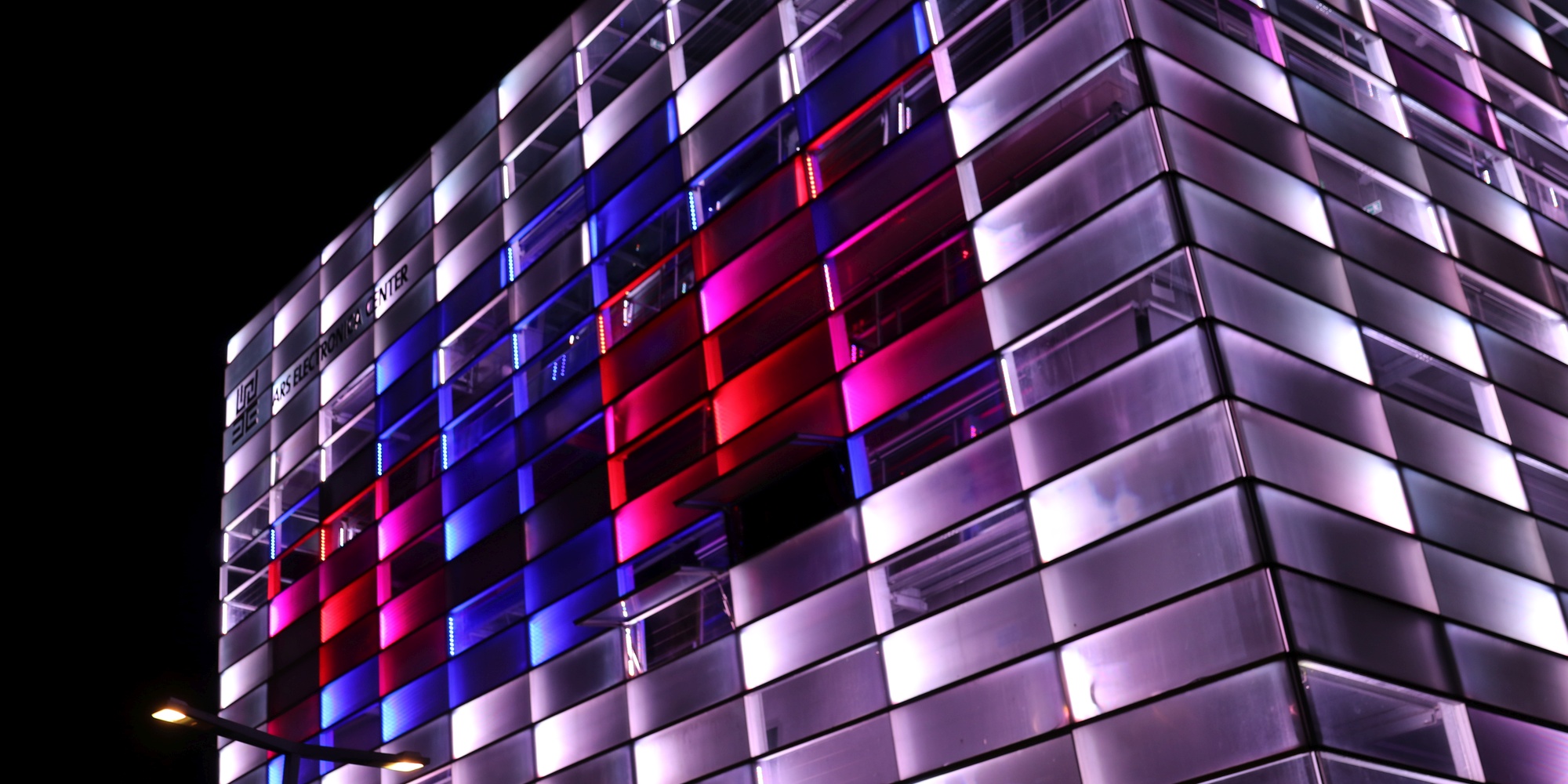In July 2022, students from Northeastern University (Boston, USA) joined the Futurelab for the second time for a three-day interactive art workshop. It focused on creating experiences for the Ars Electronica media facade – the glowing, colorful centerpiece of the city and second skin of the Ars Electronica Center.
In the Ars Electronica Futurelab Academy, we challenge the creativity of students in workshops, seminars and project-focused mentoring sessions. For the students, the hands-on approach of the Futurelab, paired with the potential and exposure of the Ars Electronica ecosystem, is a unique opportunity to develop their ideas and skills; for us Futurelab researchers, the dialogue and influx of fresh ideas is more than welcome.
Which design/art student would not be excited to cover a full building with their aesthetic vision? In four groups, the students went from brainstorming to a finished program with interactive components in two and a half days, with intensive support from our researchers when it came to quickly condensing concepts or coding the essential components in the creative coding language Processing. The results ran the gamut from music visualization to various games that one could engage with through movement or, in one case, even a smartphone app.
The outcomes were tested in a presentation session on the Ars Electronica Maindeck on a summer evening, immediately sparking attention from the public and creating conversation. The relationship of the building, the public space around it, and the people who live, work, and play in the city holds endless facets to be explored. With a great deal of creativity and enthusiasm, the students delved into the rich expressive power of such a spatial medium.
THE PROJECTS
F!REFLY
Linda Yan, China Qin
F!REFLY is an interactive firefly simulator that emulates the childlike wonder of capturing fireflies. Using motion tracking and the facade of the Ars Electronica Center, this program allows users that enter the grounds to inherit colorful fireflies and run along the length of the facade front to “capture” white fireflies – turning them the user’s own color.
“The original thought process behind F!REFLY was to recreate the glow patterns and flight paths of fireflies, thinking about biodiversity and the formation and mathematical movement of nature. With mentorship from the Futurelab and the power of Processing, the original concept evolved into a colorful, childhood-inspired firefly game. We worked on how to first make animations to mimic firefly movement, track motion with TUIO – a protocol for tracking physical movements – and apply the color algorithm to initiate the game process.“
Ribbles
Ashlynn Braisted, Erica Sammarco, Isabel Silva
Ribbles provides its audience with a memorable experience through both interaction and continuity of color on the facade of the Ars Electronica Center. Movement on the Maindeck is captured and displayed as crosshairs on all sides of the building. Those who are on the Maindeck will rush to find themselves and work with others to cause an explosion of color. Those not interacting with the facade will be drawn into the fun when they see the explosion envelope the building, followed by an animation that resets the playing field. Even without interaction, the animations will loop, exciting viewers from near and far through a rotation of vibrant colors.
“Our goal with Ribbles was to give users the chance to actively engage with one another, motivated by the ability to interact with a large-scale public art piece. The variety of vibrant visuals brings life to the building and further helps connect passerbys with Ars Electronica.“
Pixel Tag
Chloe Strandwold, Jenny Norvold, Megan Lam
Pixel Tag is a one-player interactive game against the computer to try and fill up the facade with a single color before the computer does. The facade will fill up with randomly generated colored pixels. The player will start in one corner and on their iPhone, will pick which color to absorb first to expand the colors’ presence on the facade. The player and computer will alternate choosing which color they want, with the stairs reflecting the last color chosen. The game will be reflected on each face of the facade, however for optimal play, the player should play from the Maindeck. The winner will be determined based on whoever floods the last tile. The winning color will result in fun animations.
If the game is not actively being played, then the facade will show the computer playing Pixel Tag against itself. The style and color palette of this interactive game is inspired by classic video games such Flood It, Candy Crush, Tetris and more. Furthermore, this game specifically drew inspiration from classic pixelated animation.
For the Record
Sarah Abeywardena, Lauren Koelsch, Zaneer Mitha
For the Record turns the facade of the Ars Electronica Center into a live music visualizer through the combination of vibrant animations and visual elements that react to music. Viewers of this project can experience the audible stimulation of energetic music while also observing the visual animations, coupling to become an immersive experience. The sides of the facade rotate between short animations of various natures, while the front of the building displays fluid that reacts to the song being played. Through this project, visitors of Ars Electronica are presented with an entirely new style of enjoying music.
Credits
Ars Electronica Futurelab: Matthew Gardiner, Peter Holzkorn, Otto Naderer, Anna Weiss, Yoko Shimizu, Georgios Tsampounaris
Thanks to Kate Terrado, Fiona Gridley and Kara Braciale from Northeastern Univeristy
Thanks to AE Technical Services / IT Services


